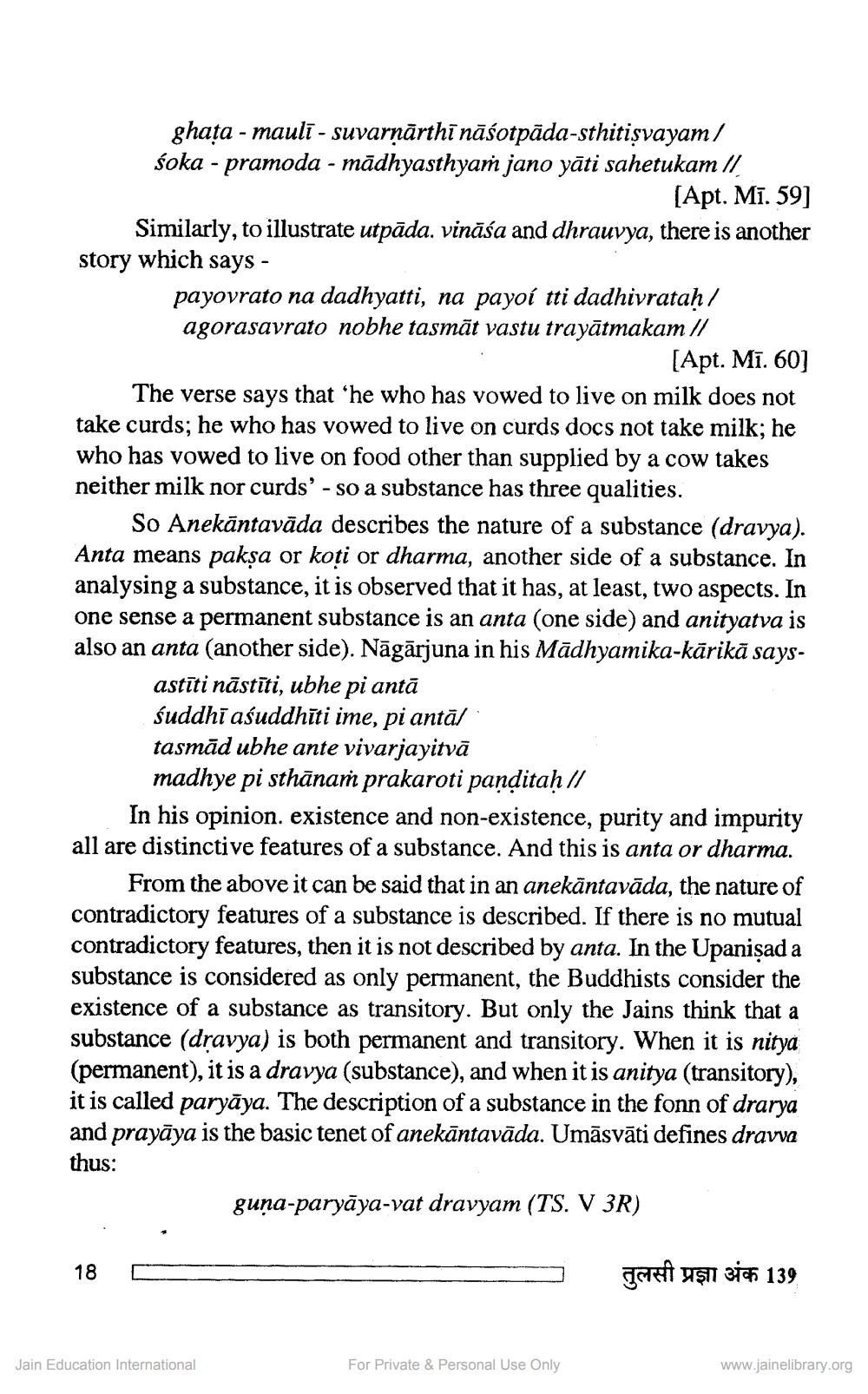________________
ghata - maulī - suvarnărthī nāśotpada-sthitişvayam/ śoka - pramoda - mādhyasthyam jano yāti sahetukam //
(Apt. Mi. 59] Similarly, to illustrate utpāda, vināśa and dhrauvya, there is another story which says -
payovrato na dadhyatti, na payoi tti dadhivrataḥ/ agorasavrato nobhe tasmāt vastu trayātmakam //
[Apt. Mī. 60] The verse says that he who has vowed to live on milk does not take curds; he who has vowed to live on curds docs not take milk; he who has vowed to live on food other than supplied by a cow takes neither milk nor curds' - so a substance has three qualities.
So Anekāntavāda describes the nature of a substance (dravya). Anta means pakṣa or koți or dharma, another side of a substance. In analysing a substance, it is observed that it has, at least, two aspects. In one sense a permanent substance is an anta (one side) and anityatva is also an anta (another side). Nāgārjuna in his Mādhyamika-kārikā says
astīti nāstīti, ubhe pi antā suddhi aśuddhīti ime, pi antā/ tasmād ubhe ante vivarjayitvā
madhye pi sthānaṁ prakaroti panditaḥ//
In his opinion. existence and non-existence, purity and impurity all are distinctive features of a substance. And this is anta or dharma.
From the above it can be said that in an anekāntavāda, the nature of contradictory features of a substance is described. If there is no mutual contradictory features, then it is not described by anta. In the Upanisad a substance is considered as only permanent, the Buddhists consider the existence of a substance as transitory. But only the Jains think that a substance (dravya) is both permanent and transitory. When it is nitya (permanent), it is a dravya (substance), and when it is anitya (transitory), it is called paryāya. The description of a substance in the fonn of drarya and prayāya is the basic tenet of anekāntavāda. Umāsvāti defines dravva thus:
guna-paryāya-vat dravyam (TS. V 3R)
18
C
]
Tori uşit sich 139
Jain Education International
For Private & Personal Use Only
www.jainelibrary.org




